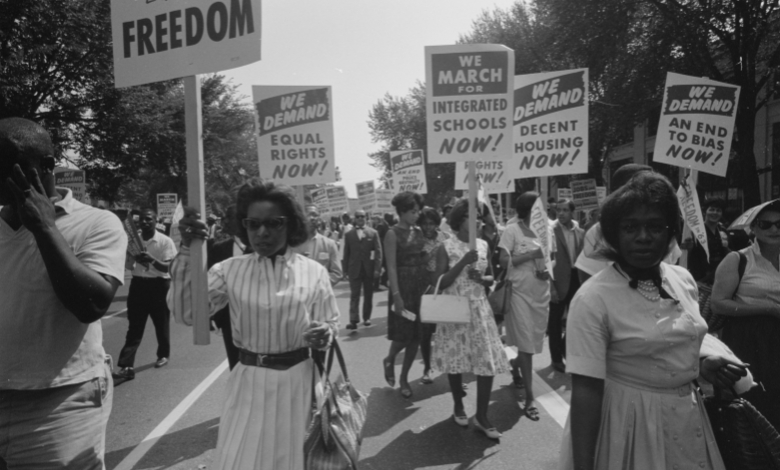Discover the story behind Jet Magazine Emmett Till funeral photos, images that exposed injustice and ignited the civil rights movement.
The story of Emmett Till and the role that Jet Magazine played in immortalizing his tragic death is more than a historical moment; it is a seismic event that reshaped the trajectory of civil rights in America. If you’ve ever come across the phrase “Emmett Till funeral photos,” you’re touching on a profoundly heartbreaking yet transformative chapter in history. Let’s dive deep into this narrative, exploring the cultural and historical weight behind these images, the bravery of Mamie Till-Mobley, and how Jet Magazine became a vessel of change.
What You'll Discover:
Context: The World Before Emmett Till
To understand why the funeral photos were so revolutionary, it’s essential to grasp the context of the 1950s in America. Racism wasn’t just a shadowy undercurrent; it was institutionalized, blatant, and often violent. Segregation laws, commonly referred to as Jim Crow, upheld racial divides. The South was particularly notorious for lynching and other forms of racial terror, which were often dismissed or justified by those in power.
African Americans, relegated to second-class citizenship, relied on Black-owned publications like Jet Magazine to see themselves reflected in media, unfiltered and untainted by whitewashed narratives. Jet wasn’t just a magazine; it was a lifeline for a community seeking dignity, representation, and truth.
The Tragedy of Emmett Till
Emmett Till, a 14-year-old boy from Chicago, traveled to Money, Mississippi, in August 1955 to visit family. There, he encountered Carolyn Bryant, a white woman, at a local store. Accounts of their interaction vary, but Bryant claimed Till whistled at her or made inappropriate advances—a claim she later admitted was exaggerated.
Days later, Roy Bryant (Carolyn’s husband) and J.W. Milam abducted Till. They tortured him, shot him, and dumped his body in the Tallahatchie River, weighed down with a 75-pound cotton gin fan. His mutilated body was discovered three days later.
Mamie Till-Mobley: A Mother’s Unyielding Resolve
When Emmett’s body was returned to Chicago, his mother, Mamie Till-Mobley, made a decision that would forever alter the civil rights movement. She chose to have an open-casket funeral, allowing the world to witness the brutality inflicted upon her son. Her words still resonate: “Let the people see what I’ve seen.”
This decision was both radical and heart-wrenching. Mamie understood the power of visual evidence in a way that few did at the time. She knew that the gruesome reality of her son’s death could not be ignored if laid bare for the world to see.
Jet Magazine Steps In
Jet Magazine’s decision to publish the photos of Emmett Till’s disfigured body was unprecedented. At the time, mainstream media often sanitized or outright ignored stories of racial violence. Jet, however, recognized the importance of showing the unvarnished truth.
The images were shocking. Emmett’s swollen, unrecognizable face stood as a stark indictment of America’s racial violence. Readers were outraged, horrified, and galvanized. The photos forced people—Black and white alike—to confront the visceral reality of racism.
Why Were These Photos So Impactful?
- Visual Proof of Injustice: Words could describe the brutality, but photos made it undeniable. The stark reality captured in those images left no room for denial or minimization.
- Catalyst for Action: Many civil rights leaders, including Rosa Parks, cited Till’s murder and the photos as pivotal in their decision to take action. Parks famously said that she thought of Emmett Till when she refused to give up her bus seat later that year.
- A Community’s Rallying Cry: The photos provided a shared moment of grief and anger for the African American community, uniting them in the fight against systemic racism.
The Role of Black Media: Why Jet Magazine Mattered
Jet Magazine’s boldness wasn’t just about publishing shocking photos. It was about reclaiming the narrative. Black media in the 1950s had the monumental task of countering the lies and omissions of mainstream outlets.
Jet operated on the principle that African Americans deserved to know the truth about what was happening in their communities. By publishing the photos, the magazine wasn’t just documenting history; it was shaping it.
A Comparison: Jet Magazine vs. Mainstream Media
- Mainstream Media: Often downplayed racial violence or framed it in ways that blamed the victim.
- Jet Magazine: Centered the victim’s humanity and the community’s outrage, providing an unflinching look at systemic injustice.
How the Photos Echoed Through History
Fast forward to today, and the photos of Emmett Till’s funeral remain a touchstone in discussions about media, race, and activism. They’ve been referenced in documentaries, books, and even art installations. But perhaps their most significant legacy lies in their ability to teach.
Lessons for Modern Activism
- The Power of Visual Storytelling: In an age of social media, images and videos continue to drive movements. Think of the footage of George Floyd’s murder or the viral photos from Black Lives Matter protests. Visual evidence remains a critical tool for social justice.
- The Importance of Independent Media: Just as Jet Magazine amplified voices that mainstream outlets ignored, today’s independent platforms play a similar role. They ensure that marginalized communities aren’t silenced.
- The Role of Courage in Change: Mamie Till-Mobley’s bravery reminds us that change often requires immense personal sacrifice. Her decision to expose her son’s tragedy to the world was a painful yet transformative act.
Addressing Misconceptions and Controversies
While the impact of the photos is undeniable, they’ve also been the subject of debate. Some argue that repeatedly showing images of Black suffering can be traumatizing or exploitative. It’s a valid concern. However, it’s also essential to recognize the agency of those like Mamie Till-Mobley, who chose to share these images not for shock value but as a deliberate act of resistance.
The Lasting Impact of Emmett Till’s Story
Emmett Till’s story didn’t end in 1955. In 2005, the U.S. Department of Justice reopened the case, though no new charges were filed. The Emmett Till Unsolved Civil Rights Crime Act, passed in 2008, was named in his honor, aimed at addressing racially motivated crimes from the civil rights era.
In 2022, President Joe Biden signed the Emmett Till Anti-Lynching Act, making lynching a federal hate crime. These legislative milestones underscore the enduring legacy of Till’s story and the role of media in driving change.
Key Takings
- The Jet Magazine Emmett Till funeral photos are more than historical artifacts—they’re a powerful call to action.
- They highlight the importance of truth, confronting uncomfortable realities, and fighting against injustice.
- Mamie Till-Mobley’s courage and Jet Magazine’s bold decision to document the tragedy sparked a movement.
- Their actions showcased the power of resilience, advocacy, and collective action in the face of unimaginable loss.
- This pivotal moment serves as a reminder to continue standing up for justice and equality.
Additional Resources:
- The Photo That Changed America’s Civil Rights Movement: This article from Time Magazine highlights how Jet Magazine and Mamie Till-Mobley’s bravery exposed the brutality of Emmett Till’s murder, sparking a civil rights awakening.





